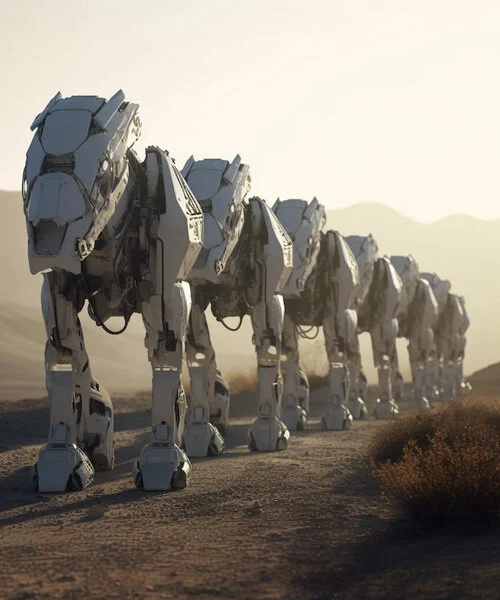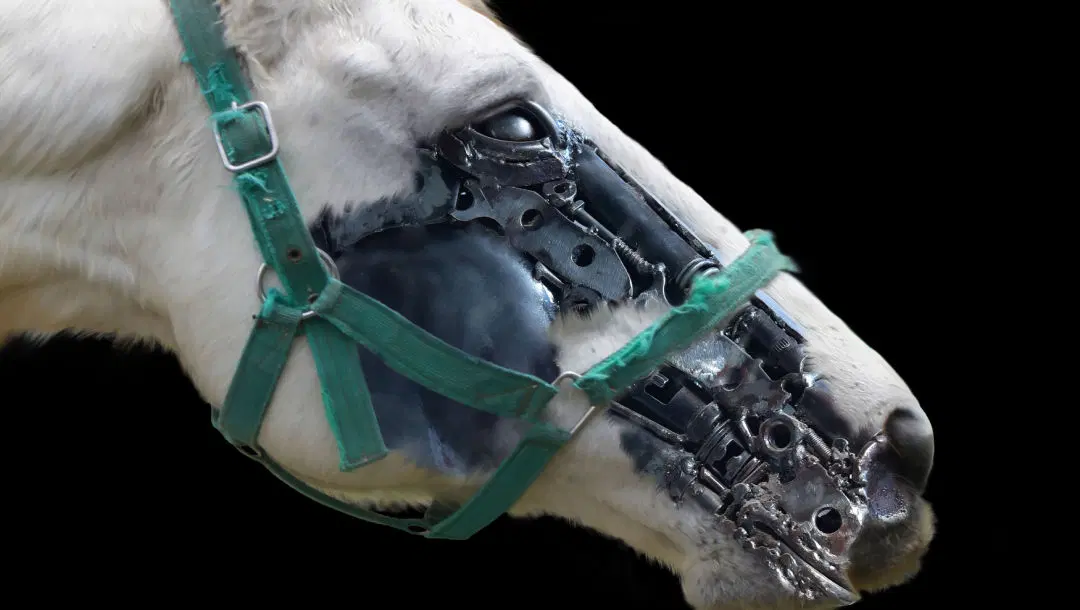Harnessing the Wisdom of Horses: Unraveling the Secrets to Crafting Superior Robots
In a world where robots are becoming more and more integrated into our lives scientists are turning to an unexpected source for inspiration: horses. These majestic creatures known for their intelligence and trustworthiness may hold the key to developing robots that are more reliable and can work seamlessly with humans. University of Florida computer scientist and roboticist Eakta Jain has delved into the world of horses to understand their behavior and how it can guide the development of more trustworthy robots.
When we think of horses we often imagine the brave steeds of cowboys and their heroic tales. These horses possess a level of sensibility and training that reminds Jain of fully autonomous robots particularly self-driving cars. Jain explains that horses that can safely bring their riders home in challenging conditions are like level-five autonomous robots - the highest level of autonomy we strive for. "You trust them with your life" says Jain.

Intrigued by the development of trust between humans and horses Jain embarked on a year-long sabbatical into the horse world in 2022. Her experiences immersed her in equine classes where she observed the interactions between horses and humans. Speaking with trainers students and horse owners Jain gained valuable insights into the intricacies of horse behavior and communication.
The early stages of building a relationship with a horse Jain discovered involve a process of mutual learning and understanding. Just as horses need to interpret and respond appropriately to human commands humans must also learn how to convey their intentions to horses effectively. This symbiotic learning process is akin to the way we interact with robots. As Jain points out we need to know how to command robots to perform specific tasks and understand how they respond to our inputs.
One fascinating aspect of horse-human partnerships is the reliance on nonverbal communication. Horses have their own way of expressing respect and trust. Jain explains that horses communicate their respect through subtle cues like matching their pace with their trainers or giving them personal space when walking together. These cues can be used as inspiration for designing robots that exude respect and make humans feel safer. For example robots with swiveling electronic ears could indicate that they are paying attention to sounds or events in their surroundings similar to how a horse's ears point towards whatever they're focused on.

Understanding the dynamics of respect and trust between horses and humans could have far-reaching implications for human-robot interactions. By studying the principles behind these dynamics scientists like Jain hope to create robots that can establish trust with humans in various contexts. This trust can help foster more effective collaborations between humans and robots leading to safer and more efficient outcomes.
However Jain acknowledges that the path to creating trustworthy robots is still largely unexplored. While we have made significant advances in developing robot autonomy the early stages of human-robot interaction where first impressions are formed remain relatively uncharted territory. Jain's work aims to fill this gap by uncovering the principles that govern human-robot interactions beyond the initial meeting.
Jain's research also highlights the importance of empathy and adaptability in robot design. Horses have a remarkable ability to sense and respond to human emotions allowing them to adapt to different riders' needs. This adaptability is crucial when developing robots that can navigate complex human environments. Jain suggests that robots could be designed to detect and respond to subtle changes in human body language just as horses do. This would enable robots to better understand and address our needs building a stronger bond of trust between humans and machines.

By incorporating the lessons learned from horse behavior into robot design scientists can develop machines that can adapt to varying situations anticipate human needs and make us feel more comfortable. For instance robots that can recognize and respond to emotional cues could provide much-needed support and companionship to those in need such as the elderly or individuals with disabilities.
Moreover the study of horse behavior can also shed light on the issue of safety in human-robot interactions. Horses naturally prioritize their own safety and the safety of their riders. This innate instinct can serve as a valuable guide when designing robots that prioritize human safety. Jain suggests that robots could be programmed to operate within certain safety parameters just like horses are trained to avoid dangerous situations.
The insights gained from Jain's sabbatical and her study of horses can pave the way for the development of more reliable and trustworthy robots. By incorporating the nuances of horse behavior and communication into robot design we can create a new generation of robots that humans can work with seamlessly.

The field of robotics is constantly evolving and as technology advances it is crucial to ensure that robots can integrate into our lives safely and effectively. Drawing inspiration from the trust and respect that exist between horses and humans is an innovative approach that holds great promise. Through the wisdom of horses we can unlock the secrets to building robots that can truly be trusted companions and collaborators in our modern world.
The benefits of this research extend beyond the realm of technology. Horses have been a part of human history for thousands of years providing us with transportation companionship and support. By deepening our understanding of these remarkable creatures we can further enhance our relationship with them and ensure their well-being. The study of horse behavior can also contribute to improving the methods of training and caring for these animals promoting their welfare and preserving our shared connection.
As society continues to embrace automation and robotics it is important to consider the ethical implications of integrating machines into our lives. By valuing the lessons taught by horses we can approach the development of robots with empathy and responsible decision-making. Just as horses have taught us the importance of trust respect and adaptability we can build a future where humans and robots coexist harmoniously enriching our lives and pushing the boundaries of technological advancement.

